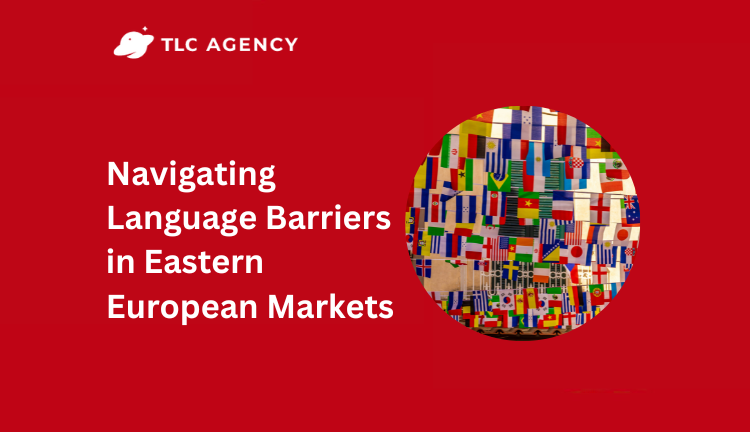Blog / Navigating Language Barriers in Eastern European Markets
Navigating Language Barriers in Eastern European Markets

Overcoming Linguistic Challenges for Effective Digital Marketing
The Eastern European region encompasses a diverse tapestry of languages, cultures, and traditions, offering a rich and promising market for e-commerce businesses. However, this linguistic diversity can pose significant challenges for digital marketing campaigns, as failing to address language barriers can lead to misinterpretations, cultural insensitivities, and ultimately, a disconnect with the target audience.
To effectively reach and engage consumers in Eastern Europe, it is crucial to adopt a localization strategy that goes beyond mere translation. This involves understanding the nuances of each language, respecting cultural sensitivities, and adapting messaging to resonate with the local context.
Understanding the Importance of Localization
Localization is a comprehensive approach to adapting marketing materials, including websites, ad campaigns, and social media content, to a specific locale. It goes beyond simply translating text into another language; it involves understanding the cultural context, local slang, and linguistic nuances that can impact the way messages are perceived.
The Difference between Translation and Localization
While translation focuses on converting text from one language to another, localization goes a step further by adapting the content to suit the cultural and linguistic context of the target audience. This includes considering factors such as:
- Language: Translating words and phrases accurately while maintaining the original meaning and tone.
- Cultural Nuances: Understanding and respecting cultural references, idioms, and taboos.
- Local References: Using local slang, idioms, and expressions to connect with the audience on a more personal level.
- Visuals: Adapting images, videos, and graphics to align with local aesthetics and cultural preferences.
Why Localization Matters in Advertising
Effective localization is essential for successful advertising campaigns in Eastern Europe. Here are some of the key reasons why:
- Enhanced Relevance: Localized messaging resonates with the local audience, making ads more relevant and engaging.
- Improved Brand Perception: A localized approach demonstrates respect for local culture and builds brand trust.
- Increased Click-Through Rates: Localized ads are more likely to capture attention and drive visitors to the website.
- Higher Conversion Rates: Localized messaging can lead to higher conversion rates, as it speaks directly to the needs and interests of the target audience.
Best Practices for Effective Localization
To ensure effective localization, follow these best practices:
- Hire Native Speakers or Professional Services: Employ native speakers or professional localization services to ensure accurate and culturally sensitive translations.
- Understand Cultural Nuances: Conduct thorough research on local customs, traditions, and taboos to avoid cultural faux pas.
- Test and Refine: Conduct A/B testing to fine-tune localized content and optimize its effectiveness.
- Seek Feedback: Gather feedback from local beta testers to identify areas for improvement.
Tools and Resources for Localization
A variety of software and services can assist in localization efforts:
- Translation Management Systems (TMS): These platforms streamline the translation process, managing communication with translators and ensuring adherence to brand guidelines.
- Smartling: A cloud-based TMS that offers a user-friendly interface, advanced translation features, and integration with various marketing platforms.
- Memsource: A powerful TMS with a focus on localization, providing advanced features for managing multiple languages, managing translation memories, and ensuring consistency across projects.
- SDL Trados: A widely recognized TMS with a long history and a strong reputation for reliability and quality.
- Machine Translation Tools: While not without limitations, machine translation tools can provide initial translations, which can then be refined by human translators.
- Google Translate: A free and widely used machine translation tool with a good overall accuracy for common languages.
- DeepL: A more advanced machine translation tool that offers higher accuracy, especially for European languages.
- Systran: A commercial machine translation tool known for its focus on technical translations.
- Cultural Insight Tools: These tools provide information and insights into cultural norms, taboos, and language usage:
- LangaugeTool: A platform that provides insights into language usage, cultural references, and taboos across different regions.
- Culturize: A subscription-based service that offers detailed cultural insights for specific countries and regions.
- Gengo Insights: A free resource from the translation service provider Gengo that provides cultural tips and advice for specific languages and countries.
Case Studies: Successful Localized Campaigns
Several brands have successfully implemented localization strategies in Eastern Europe, resulting in increased engagement, brand awareness, and sales. Consider these examples:
- Heineken: The global beer brand adapted its marketing campaigns for each Eastern European market, using local celebrities, language, and imagery to connect with consumers on a personal level.
- Pepsi: The beverage company launched a localized campaign in Poland that highlighted the company’s commitment to sustainability and environmental responsibility, aligning with the country’s growing environmental consciousness.
- IKEA: The Swedish furniture retailer localized its website and product descriptions for the Czech market, using local language, measurements, and currency to make the shopping experience more user-friendly for Czech consumers.
Conclusion and Next Steps
In today’s globalized digital landscape, effective localization is no longer an option but a necessity for businesses seeking to succeed in Eastern Europe. By adopting a comprehensive localization strategy, businesses can overcome language barriers, connect with local consumers, and achieve sustainable growth in this dynamic market.
Embrace the diversity of Eastern Europe, respect its rich cultural heritage, and tailor your marketing messages accordingly. Localization is not just about translating text; it’s about understanding the essence of a culture and connecting with it on a deeper level. By embracing localization, you unlock the potential to tap into the vast and lucrative market of Eastern Europe.